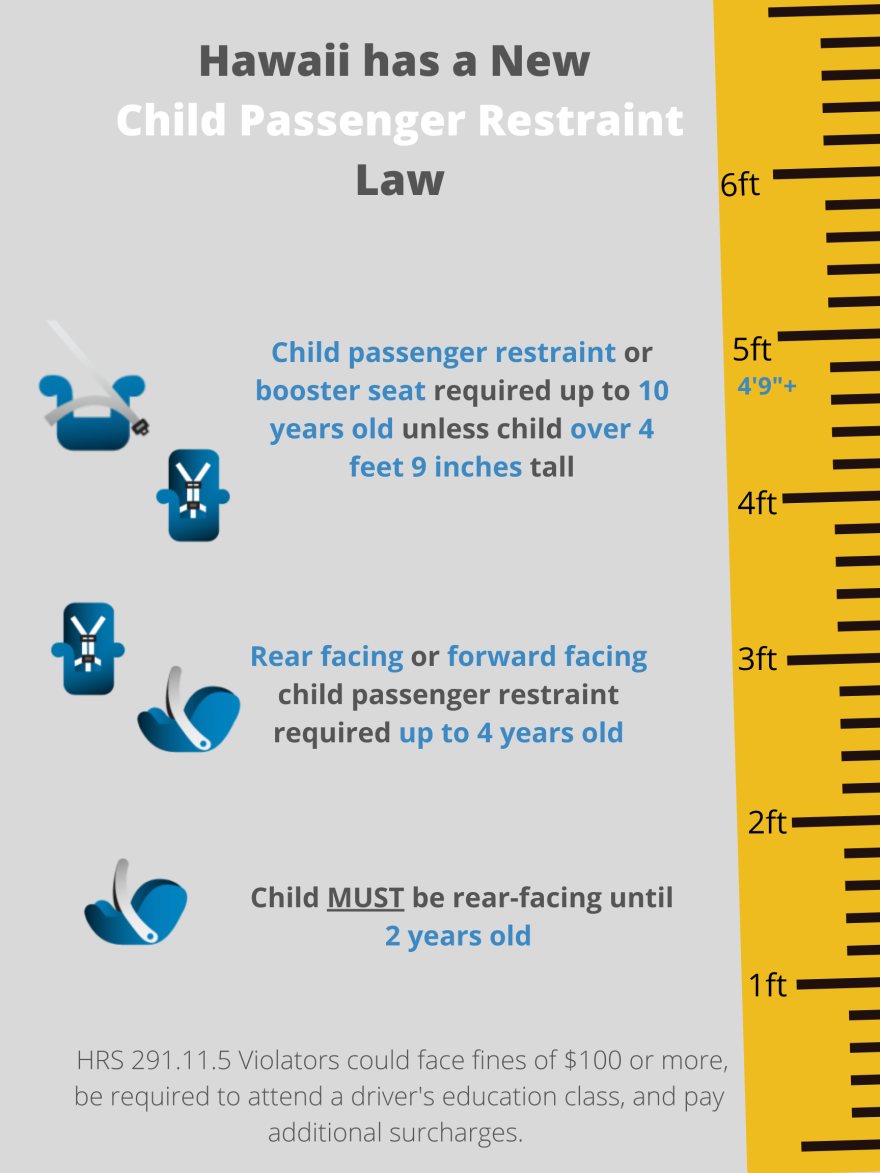The Hawaiʻi Department of Transportation has changed its requirements for keiki car seats. Gov. David Ige signed Senate Bill 152 into law on June 27. Lawmakers hope the new provisions will protect children and save lives.

All children under age 2 must be seated in a rear-facing car seat. Previously, there were no laws requiring rear-facing car seats for kids.
Children between ages 2 and 4 can ride in either a rear- or front-facing seat, but they must use a harness.
Although children were previously allowed to ride without a booster seat at age 8, they must now use a booster seat until age 10. But children can use just a lap and shoulder seat belt if they are at least 4 feet and 9 inches tall.
Fines for violating child safety transportation laws have also increased. Failing to comply with the new requirements could end you up with a fine of up to $800 for a repeat offense.
“Even one injured keiki is too many,” Ige said in a press release. “The new child passenger safety law addresses gaps in the previous statute and aligns Hawaiʻi with the latest research and national recommendations.”
Even with the right car seat, the Keiki Injury Prevention Coalition urges drivers to ensure that seats are installed safely and seat belts fit properly.
Emergency, commercial, and mass transit vehicles are exempt from the law.
You can read SB 152 below:




